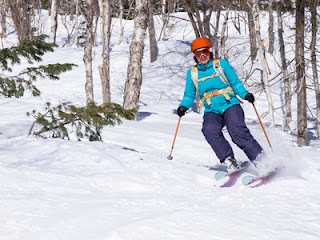-
Ski or snowboard with a buddy. If you do opt to go solo, let someone else know your whereabouts.
-
Warm up before you head out, just as with any sport. A few minutes of jumping rope, jumping jacks, or light stretching will get your blood flowing and prepare muscles, tendons, and ligaments for the workout ahead.
-
Wear proper protective gear at all times, including a helmet (especially a helmet!), eye goggles, and gloves.
-
Have all equipment fitted and checked by a professional before using it, especially ski boots. Ensure that all fasteners work well and that nothing is either too loose or too snug.
-
If not a regular on the mountain, or this is your first time skiing or snowboarding, take a lesson from a qualified instructor. Knowing how to fall, and get up correctly, can greatly reduce the risk of injury.
-
Always pay attention to weather conditions for the day and heed any warnings from the National Weather Service, the ski patrol, or your resort.
-
Wiggle your way throughout the day by frequently checking on toes and fingers to avoid getting frostbite. You should always be able to move and feel these extremities even as they are tightly bundled up. If you have lost sensation at all, find shelter and warmth before removing garments, and seek medical help immediately.
Slope Safety
If you’re one of the lucky ones about to hit the slopes for Spring Break, have fun, but make sure you stay safe.
In 2015, more than 88,000 people were injured in skiing accidents, according to the U.S. Consumer Product Safety Commission.Another 61,000 suffered injuries from snowboarding, including sprains and strains, dislocations, and fractures.
Many skiing and snowboarding injuries are actually preventable. Here are seven tips for staying safe on the slopes:
Finally, remember to call it a day whenever you feel any pain or exhaustion. Most mountain injuries happen late in the day once your body is tired and weak and vision has likely become impaired from the setting sun.



